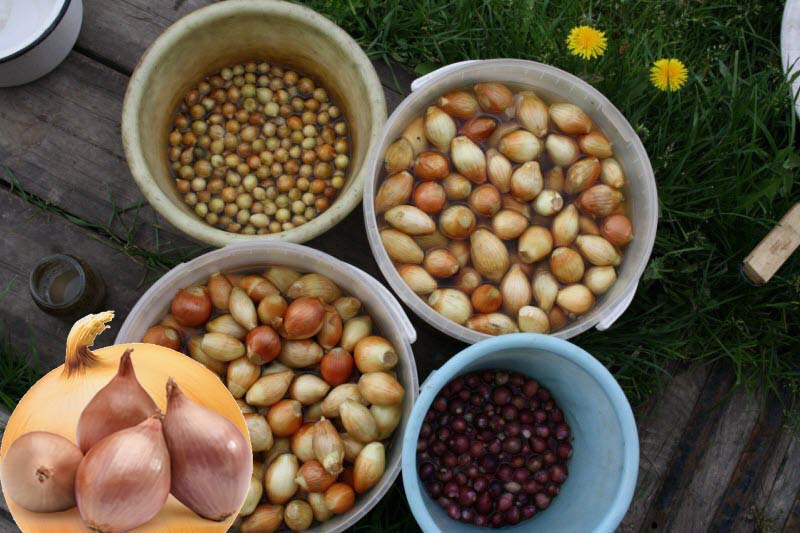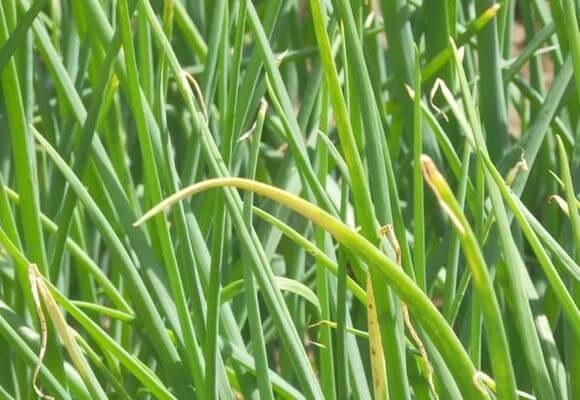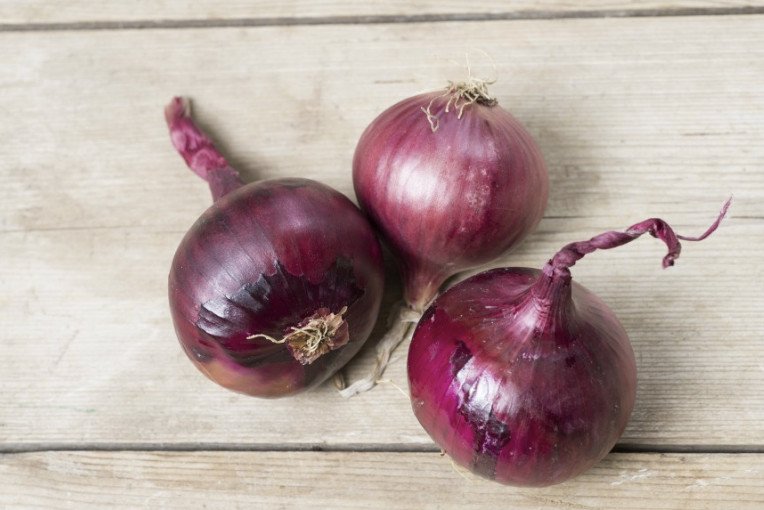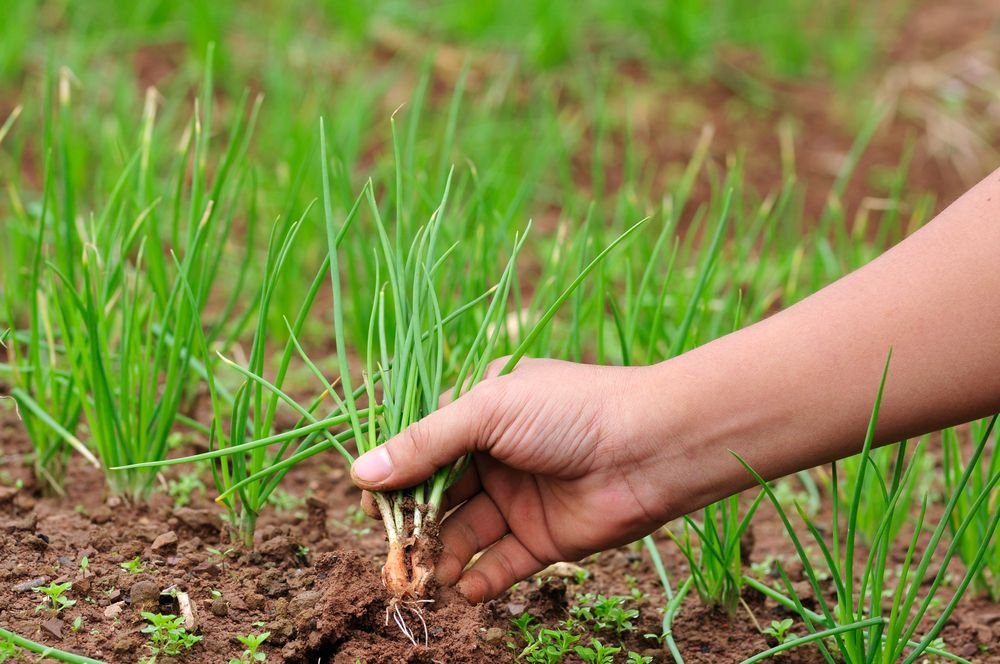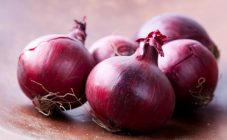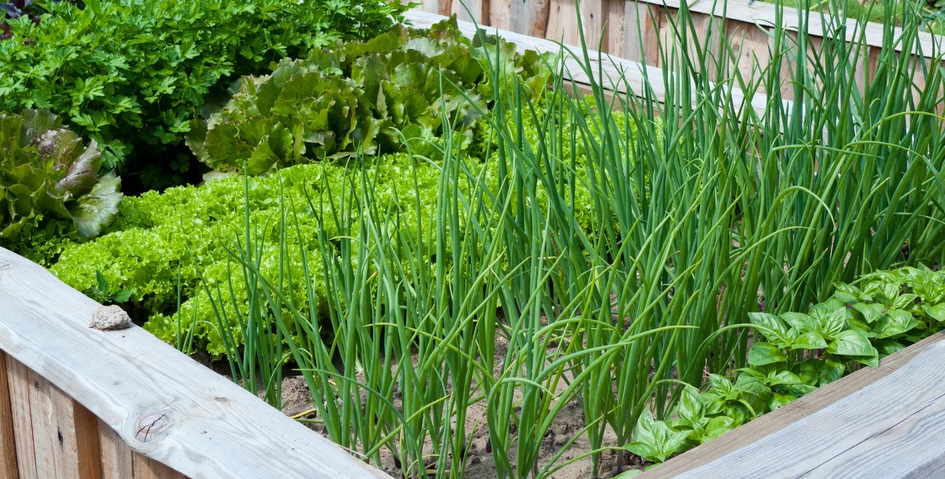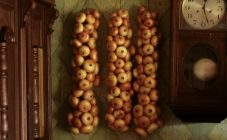Content:
It is difficult to imagine a summer cottage without a bow. It is a source of vitamins and protector against harmful microorganisms. A vegetable that is grown with your own hands has a double benefit. For pleasure in growing and a good harvest, it is advisable to choose the right variety. The Seton bow will live up to expectations.
Description
The crop was bred by Dutch breeders as a variety of the Sturon variety. Cultivated in the north of Europe. Suitable for farms and household plots. In 2015, it is entered into the State Register for the Central Region of the Russian Federation.
Distinctive characteristics of the plant:
- mid-season variety;
- rounded shape;
- yellow-brown color of scales;
- feather height - up to 45 cm;
- unilocular bulbs;
- large size of fruits;
- high yield - from 1 m2 to 6 kg;
- weight of bulbs - up to 110 g;
- spicy taste;
- good keeping quality and transportability.
Setton onions are grown as a biennial. First, they get sevok - small onions, in the second year - turnip. Practicing pre-winter sowing, as well as classic planting in the spring. The first method allows for an earlier harvest of onions. To get sevok, they simply sow seeds, and then cultivate them in the garden. Planting material is bought in specialized stores or online sites. Turnip growing - within one season.
Ripe vegetable heads are used in salads, just right for thermally unprocessed meals and canning.
How to grow
An open, sun-lit area is suitable for planting crops. Soil requirements:
- fertile;
- well drained;
- moderately moist;
- without close occurrence of groundwater.
For setton, loam or sandy loam is preferable, so that the loose soil provides air circulation to the roots. The acidity level of the soil ranges from 6.5-7 pH.
Onions are planted after:
- tomatoes;
- cabbage;
- potatoes;
- cucumbers.
Poor plant precursors: carrots or garlic.
How to plant
Soil preparation is carried out in the fall: digging, removing weeds, introducing organic matter (5 kg of manure, 500 g of ash per 1 m2). Before planting, the bed is leveled with a rake. Adhere to the planting scheme:
- the distance between the bow is 10 cm;
- the spacing in the row spacing is 25 cm.
If seeds are planted
Heat treatment is required. The seeds are immersed in warm liquid for 3 hours: specimens unsuitable for planting will appear at the top. The inoculum is disinfected for 30 minutes by soaking in a pink solution of potassium permanganate. Then they are washed and placed in water heated to 50 ° C for 40 minutes. Do not pass hardening. After heat treatment, the seeds are placed in the refrigerator for half an hour. The material can be planted.
The seeds are planted in peat tablets or individual cassettes. Exposed to the sunny side of the windowsill.
They take care of the seedlings, periodically watering the seedlings abundantly. They are fed after 2 weeks with liquid organic matter.
Transplanting into open ground is combined with hardening of plants: they are taken out into the yard in the sun for a short time. The outdoor experience is gradually increasing. The procedure lasts 7 days. Plants are transplanted into the beds in early May at an air temperature of +12 ° C.Sprinkling the onions with earth - 2-3 cm. They prefer elevated beds.
Winter sowing
Most gardeners speak positively about the winter onion planting, which provides a crop at least 2 months earlier than usual. They carefully monitor the meteorological conditions for the timely landing of the sevka. The time is right if the air temperature for several days is +5 ° С, and frosts are expected in 2-3 weeks. Usually it is November, sometimes October. The sevok is deepened 6 cm to prevent freezing.
The rows are sprinkled with peat, fertile soil. How to use mulch at hand: foliage, spruce branches, straw. The protective shelter is removed when the heat comes.
The advantages of planting a vegetable crop before winter are noted:
- early harvest;
- high yield;
- improved resistance of the vegetable to shooting and negative environmental influences;
- the use of small bulbs, up to 1 cm in diameter, the preservation of which until spring is problematic.
Spring sowing
High-quality onions are planted in open ground when the air warms up to +12 ° C, otherwise the vegetable needs to be covered. The seeding depth in spring is from 3 to 5 cm. When using agrofibre, the seedlings are planted when the snow melts. Without shelter, onions are planted later, if there is no cold weather.
For the northern regions, the last decade of April or early May is just right. Mulching the beds with hay, rotted sawdust, and straw promotes the speed of germination. When greens appear, the covering material is removed.
Landing
It is important to prepare the bulbous plants for planting correctly. Drying and heating of the set will be required. If planting is planned in a few weeks, the seed is kept at + 20 ° C. The day before the planned work or immediately before them, the bulbs are heated at 35-40 ° C.
The sevok is placed in hot water and kept for 20 minutes. This agronomic technique activates germination and reduces the formation of arrows. It is useful to disinfect the bulbs with copper sulfate or potassium permanganate. A growth promoter is suitable for these purposes.
How are they looked after
To get a good harvest, it is useful to adhere to the rules of onion care.
Watering
Water the plants once a week. Water is consumed in a volume of 10 liters per 1 m2 of onion. Do not allow the land to dry out and water stagnation. In the middle of the summer season, watering of the plantings is reduced due to the ripening of the bulbs. This does not apply to the dry season, when frequent moistening of the seedlings is required. Before harvesting, watering is stopped for 2-3 weeks.
Loosening the soil and removing weeds
To increase the air permeability of the soil and the access of oxygen to the root system, loosening will be required. Periodically loosen the ground between the rows. When the onion reaches medium size, the soil is raked off the vegetable. When weeds appear, weeding is carried out, preventing clogging of the plantings.
What should be fed
During the growing season, 3 dressings are carried out:
- 2 weeks after disembarkation. They are fed with organic matter in liquid form at the rate of a 10-liter bucket per 1 m2 of area;
- After 1 month. Mineral fertilizers are introduced: potassium sulfate and ammonium nitrate, spending 15 g per 1 m2;
- 2 months after feeding for the first time. Fertilize with products that contain calcium.
How to deal with pests and diseases
Preventive special treatment against fungal infections will not hurt. When the pen reaches 15 cm in length, the Setton onion sets are treated with copper sulfate. The solution is prepared from 10 liters of water with the addition of 1 tsp. substances. For better adhesion, liquid soap (1 tbsp) is introduced into the mixture. Only feathers are sprayed, consuming 500 ml of liquid per 1 sq. m.
Experienced vegetable growers advise to disinfect the sevka with Quadris or Bordeaux liquid so that the plants do not suffer:
- rust and cervical rot;
- peronosporosis and onion fly;
- black mold and fusarium.
The ideal solution in countering harmful insects is the neighborhood with carrots onions. Thus, the plants protect one another. Copper oxychloride is used as a prophylactic drug.
Incorrect vegetable care is fraught with problems:
- White feather color with gray bloom - moisture deficit;
- Faded green of the feather - waterlogging;
- Short and slowly developing feathers in small numbers - lack of nitrogen fertilizers;
- Corrugated gray leaves - lack of potash fertilizers;
- Drying of vegetable crops ahead of time - phosphorus hunger.
How to collect and store
Harvesting for winter storage is in August. By the nature of the ripening of the husks of the onion and the lodging of feathers, the beginning of the harvest is judged.
Plants are pulled out of the soil in dry weather. To dry out, they are laid out in a garden bed, attic or under a canopy. The dried feathers are trimmed, leaving a tip 4 cm long. The roots are also cut off. Leave for a week and a half for final drying. A cellar, basement, insulated utility room are suitable for storage. Shelf life - about 7 months with ventilation, humidity - 75%, temperature - 0 ... + 4 ° C or + 18 ... + 22 ˚C.
Pros and cons of culture
Merits of Setton:
- immunity to disease;
- resistance to shooting;
- friendly ripening of fruits;
- long-term storage without decay and germination;
- the possibility of growing a plant for sale due to the yield and presentation;
- almost 100% ripening.
Sevok is frost-resistant. If there is no snow cover entirely, the culture is not afraid of -15 ° C. Withstands lower temperatures in the presence of snow. It tolerates and survives as much as possible at -23 ° C.
Disadvantages:
- exact adherence to the technological process;
- high price of seed.
Russian gardeners are not yet used to this type of onion. Its cultivation in a summer cottage promises a lot of advantages. It is used in cooking, cosmetology, folk medicine. The description of the Setton onion variety will help novice summer residents get acquainted with agricultural techniques and please themselves with an excellent harvest.

